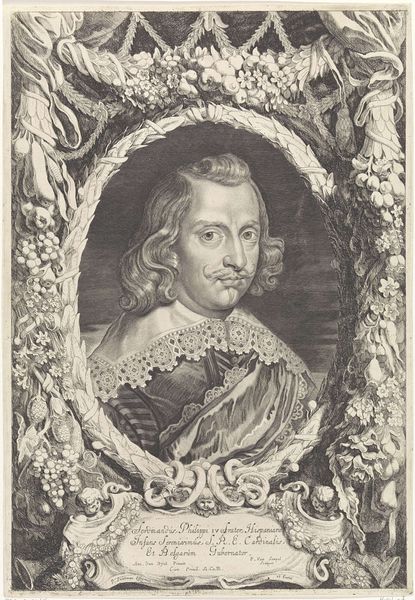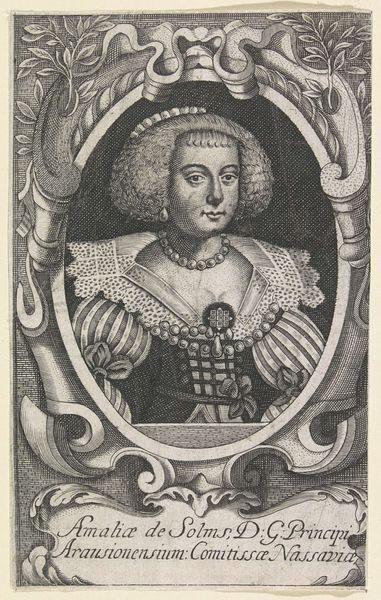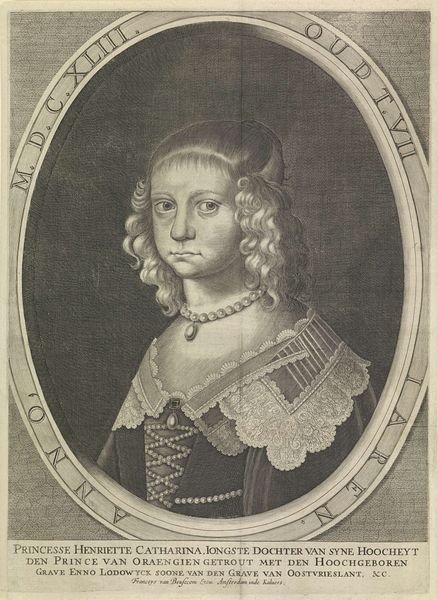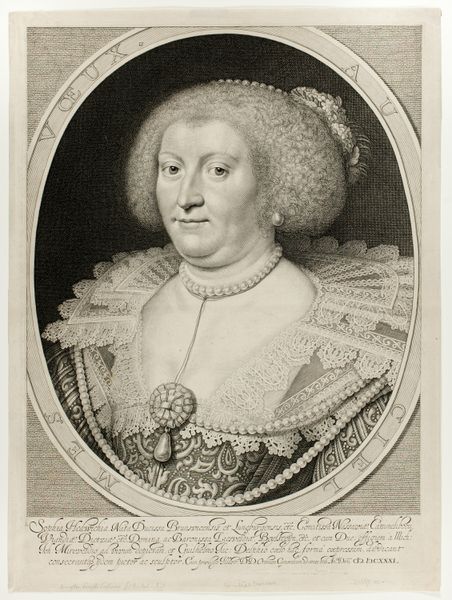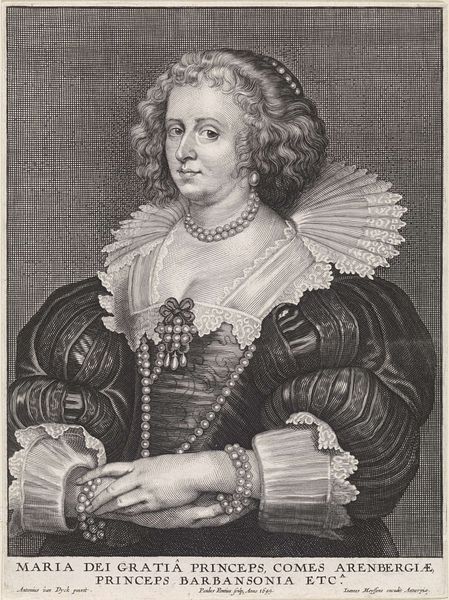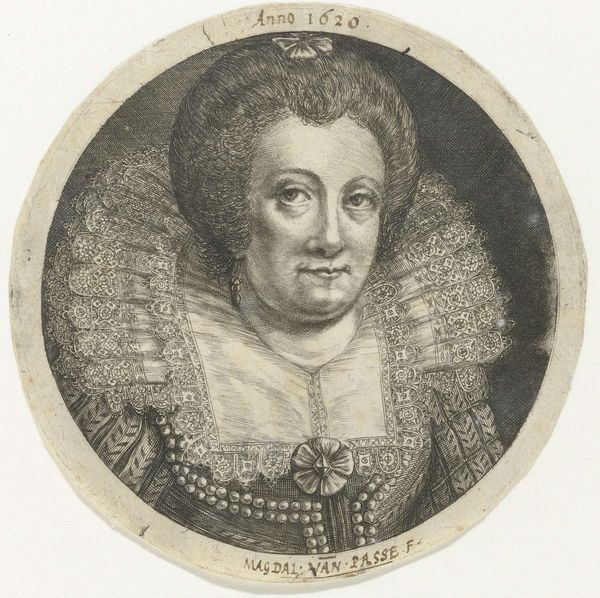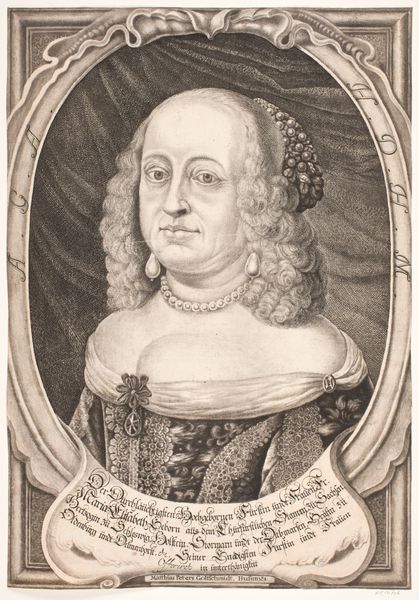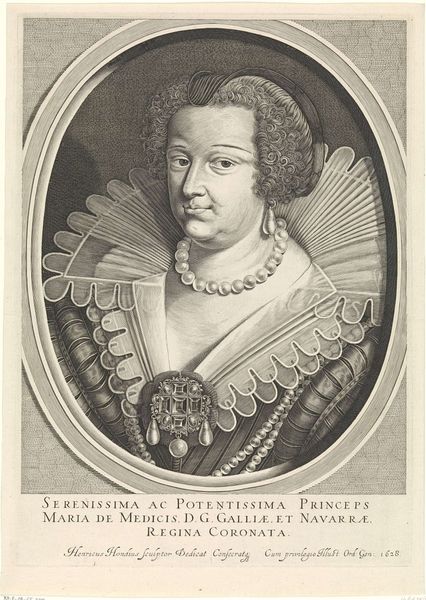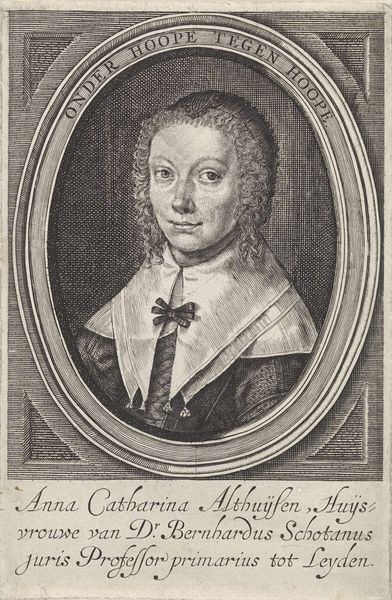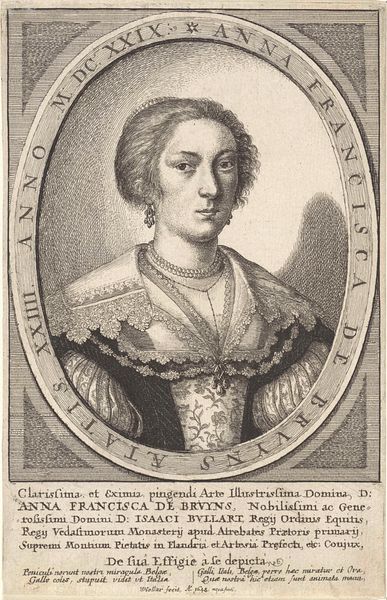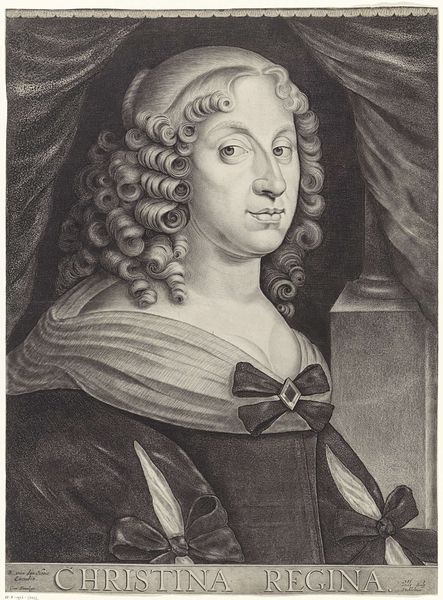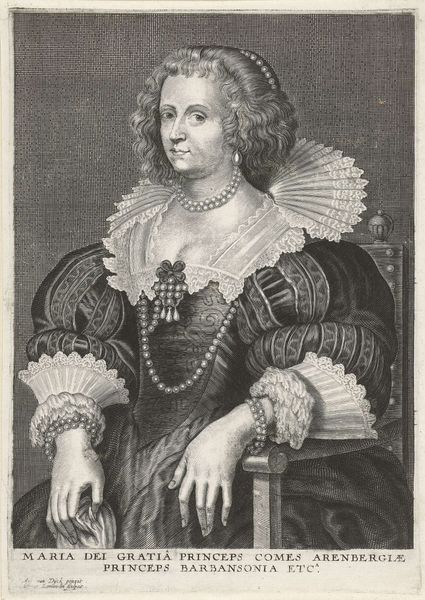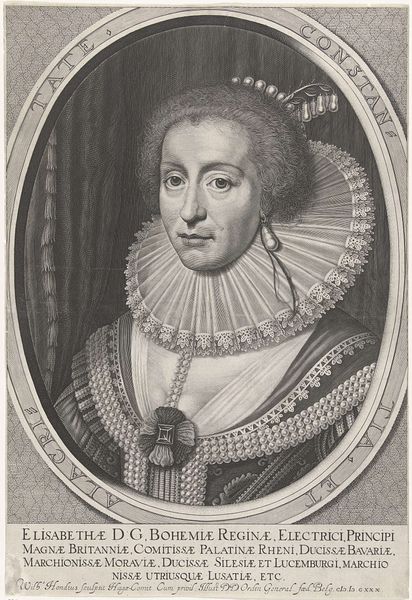
print, engraving
#
portrait
#
baroque
#
dutch-golden-age
# print
#
old engraving style
#
portrait reference
#
pencil drawing
#
engraving
Dimensions: height 414 mm, width 295 mm
Copyright: Rijks Museum: Open Domain
Hendrick Hondius the First produced this engraving of Amalia van Solms in the Netherlands when she was 26 years old. This print, now in the Rijksmuseum, tells us a lot about how elites wished to be seen in the 17th century. In the Dutch Republic, portraiture served a crucial function. In the absence of a royal court, portraits of leading citizens became important vehicles for asserting status and solidifying social networks. Amalia van Solms, through her marriage to Prince Frederick Henry of Orange, became a central figure in Dutch political life. Hondius’s engraving captures Amalia’s noble status through her elaborate dress, jewelry, and the formal setting of the portrait. The Latin inscription emphasizes her titles and lineage, reinforcing her position within the European aristocracy. A print like this would have circulated among the elite, reinforcing social hierarchies and signaling Amalia’s power and influence. Understanding this image requires us to consider the social function of portraiture in the Dutch Golden Age, using archival research to explore the networks of patronage and the circulation of images in early modern Europe.
Comments
No comments
Be the first to comment and join the conversation on the ultimate creative platform.

